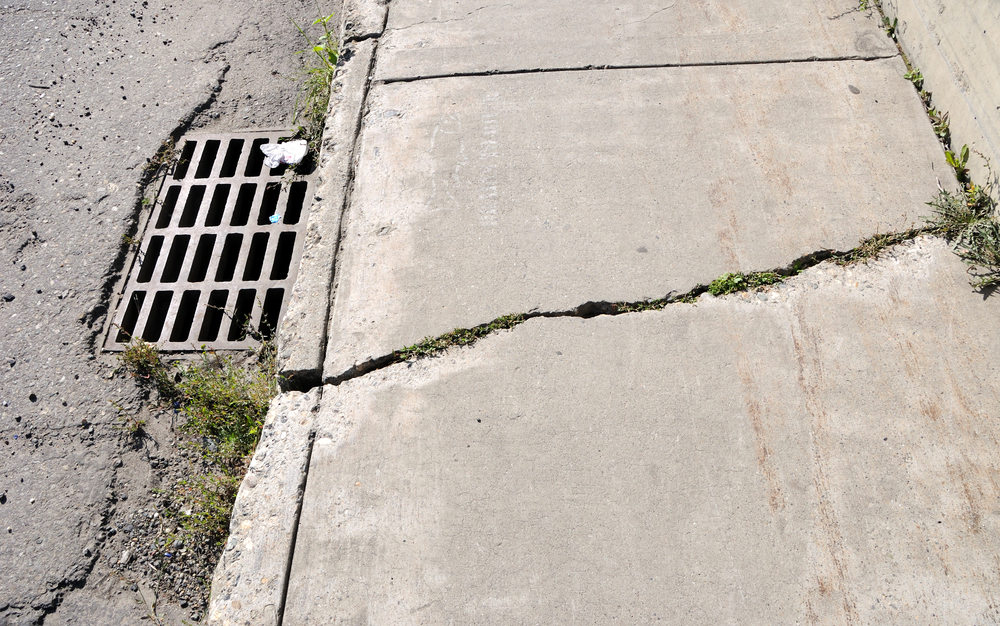
Image via Shutterstock
Someone over at City Lab is complaining that he had to pay to fix the sidewalk in front of his house, which is the standard practice in much of America. He thinks it is wrong, subsidizes cars, etc.
If a homeowner can’t pay to fix the sidewalk in front of his house, how in the world can he believe that the taxes his house generates will pay for schools, libraries, police, fire, streets, and all the other public services he is consuming?
If a homeowner doesn’t want to pay for a minor repair that benefits him personally more than anybody else, and which raises his property values, why should we expect such a person to truly be interested in the public interest, or in the interests of citizens on the other side of town he barely knows?
Sites like City Lab complain endlessly about sprawl. One reason we get so much of it is that these suburban homeowners are able to push the cost of their infrastructure onto the “government”, which is to say somebody else. They can get other people and businesses in the community (or outside of it, in the form of state or federal aid) to subsidize things that benefit almost entirely just them or the residents of their particular subdivision.
The best way to curb sprawl is to make these developments start internalizing their infrastructure cost. A lot of this has happened with requirements to developers to pay for a lot of infrastructure up front, impact fees, etc. But there’s more than can be done.
Somebody said to me that if I think people should be responsible for the sidewalk in front of their house, why not the road too? Great idea. For new subdivisions, there’s no reason not to require them to retain the roads as private streets, like a gated community. That’s particularly true since they often aren’t through streets anyway.
Of course that has potential downsides, such as when these subdivisions end up failing anyway. That’s why I’ve previously suggested requiring developers to insure their subdivisions against bailouts.
Now the author of this piece lives in Jenkintown, PA. This is an older suburb – 4400 people, 94% white, median household income of $73,000 – but it’s still a suburb or town, not a city neighborhood. So its a kind of sprawl too. In fact, even most “city” neighborhoods are mostly single family sprawl of an earlier era. Like today’s new fringe suburbs, these also require big subsidies because they don’t generate enough in taxes to pay for the services they consume.
People who want “the city” to pay for the sidewalk in front of their house are basically angling for a subsidy. After all, if the city were simply the implementing mechanism, collecting taxes proportional to each person’s sidewalk frontage, what would be the difference financially? Only, perhaps, the ability to spread the payments out more.
The great thing about requiring homeowners to pay for and shovel their sidewalks is that it surfaces the very real costs of urban infrastructure, ones that homeowners don’t want to think about.
Once these costs start becoming visible, change is possible. One person noted that if these properties had to foot the real cost of services, the homeowners might start becoming more open to higher density development real quick. It’s easy to be a NIMBY when you’re able to transfer costs to commercial property owners, municipal debt, etc.
A lot of older communities do have large accumulated infrastructure needs. To fix up the streets and sidewalks is going to require an injection of funds.
My idea has been for the city to use the carrot of city funding to leverage a contribution from neighborhoods that can afford it. There’s no reason that streets full of expensive homes can’t be paying into a residential BID (business improvement district) type structure to help finance ongoing maintenance of their infrastructure (street sweeping, plowing, potholes, sidewalks, etc). This also provides a mechanism for both internalizing costs and evening them out over time.
Given that there are always going to be more needs than funds, why not align with neighborhoods that are willing to put skin in the game? Today we do just the opposite. We focus infrastructure improvements into select high quality older districts, then as soon as the wealthier folks move in we hand them a historic district designation to keep out higher destiny infill to boot. It’s Robin Hood in reverse, and produces perverse anti-development incentives.
You don’t want to fully privatize the streets in these wealthier older areas, because then the people who live there become disconnected from the public services of the city. They should have skin in the game both for the street in front of their house, and the overall infrastructure of the city.
In any event, having to pay for and shovel the sidewalk in front of your house is one of the few tangible infrastructure costs we’ve actually forced homeowners to directly bear. Yet the appetite for subsidy for single family homes is so high, even that comparatively minor cost is too much for many.
from Aaron M. Renn
http://www.urbanophile.com/2016/07/28/homeowners-should-have-skin-in-the-game-for-sidewalk-costs/
No comments:
Post a Comment